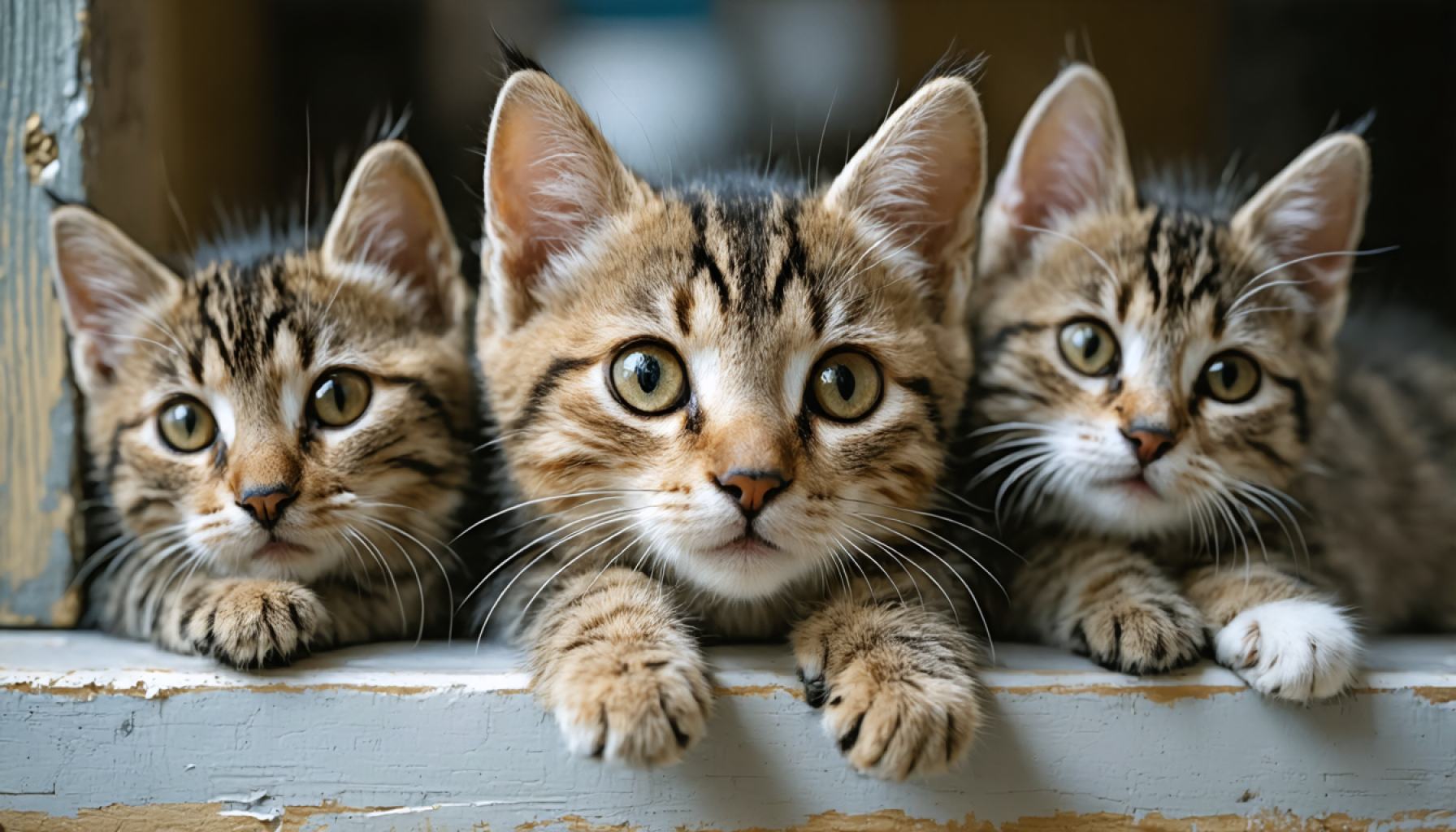- The rise of “Nekonomics” economic trend is forecasted to reach 2.9 trillion yen by 2025, a 50% increase from 2022, driven by the popularity of cats in Japan.
- FamilyMart is at the forefront with 21 new Cat Day products, reflecting the growing market for feline-themed items.
- Major retail and department stores are embracing the cultural phenomenon of cats, creating dedicated spaces and opportunities for innovation.
- This growing trend highlights the power of consumer affection for cats, as they influence both digital and retail landscapes.
- Japan’s “Cat Day” celebration exemplifies the whimsical and economic potential of the communal love for cats.
Felines are making a splash far beyond their viral internet videos. As February 22nd, Japan’s beloved “Cat Day” approaches, the market teems with products and services honoring these furry companions. We’re witnessing the surge of “Nekonomics,” with its economic forecast for 2025 soaring to a remarkable 2.9 trillion yen—a staggering 50% increase compared to 2022.
Convenience giant FamilyMart leads the charge, transforming aisles into a celebration of all things feline, launching a record 21 unique Cat Day products this year. The charm of cats weaves through charmed consumers and entices entrepreneurs alike, creating a tapestry of opportunities that stretches from retail giants to nimble startups.
Renowned department stores are joining the bandwagon, dedicating spaces to this whimsical affair, as though each aisle purrs with the promise of delight. This annual winter spectacle has quickly turned into an anticipated tradition, an economic engine fueled by the communal love for our whiskered friends.
The narrative of “Nekonomics” underscores a timeless truth: the allure of cats transcends commerce, capturing hearts and driving innovation. As cats reign supreme over digital and physical realms, they shape consumer behavior in delightful and unforeseen ways.
Amidst all the furry affection and consumer frenzy, the key takeaway remains clear: sometimes, economic power comes with a playful tail and a contented purr. The world, it seems, spins a little smoother with a cat curled around its heart.
Discover the ‘Catconomy’: How Feline Frenzy Fuels Business Innovation
How-To Steps & Life Hacks: Capitalizing on the Cat Trend
1. Identify Your Niche: Start by pinpointing aspects of the cat market that are underserved. Whether it’s organic cat food, creative toys, or stylish cat wearables, specialization can give you a competitive edge.
2. Market Research: Conduct thorough market research specific to your target audience. Platforms like Statista and Pew Research offer valuable insights into consumer preferences and trends.
3. Engage with the Community: Leverage platforms like Instagram and TikTok to engage with cat enthusiasts. Host events or create challenges that encourage sharing and interaction.
4. Eco-Friendly Packaging: Sustainability is a key concern for consumers today. Using recyclable materials and promoting environmental responsibility can help differentiate your brand.
5. Innovate Continuously: Keep up to date with the latest in pet technology and integrate modern solutions such as smart collars or health-monitoring systems.
Real-World Use Cases
– Retail Giants: FamilyMart and department stores in Japan are capitalizing on Cat Day by offering themed products that cater to cat lovers, boosting sales and brand affinity.
– Startups: New companies are emerging to fill niches such as personalized cat nutrition plans or luxury pet accommodations. These niches reflect changing consumer demands and lifestyle trends.
Market Forecasts & Industry Trends
The cat economy, or “Nekonomics,” is expected to reach 2.9 trillion yen by 2025, showing a 50% increase from 2022 figures. According to a market analysis from Grand View Research, the rise in pet humanization and spending on pet health are key drivers of this growth.
Reviews & Comparisons
– Product Quality vs. Quantity: Consumers are now more inclined to spend on high-quality products. Brands offering robust material and innovative designs often receive higher consumer satisfaction.
– Diverse Offerings: Companies that offer a wide variety of products, from essentials to luxury items, are faring better in capturing diverse consumer interests.
Controversies & Limitations
– Ethical Concerns: Ethical considerations, such as the welfare of animals used in marketing, are becoming increasingly important. Companies must be transparent about sourcing and product testing.
– Disposable Income Dependency: The growth of the cat economy heavily relies on discretionary spending. Economic downturns can significantly affect this sector.
Features, Specs & Pricing
The diverse product range in the cat economy includes everything from smart feeders with integrated cameras to custom-designed cat furniture. Pricing varies widely based on features, with high-tech items at premium rates.
Security & Sustainability
As consumers become more environmentally conscious, demand for sustainable and secure products, like biodegradable litter and secure cat collars, is on the rise. Companies focusing on these aspects can potentially gain a competitive advantage.
Insights & Predictions
Experts predict an even greater overlap between technology and pet care. The integration of IoT in pet products and health monitoring systems will be pivotal in shaping future consumer behavior.
Pros & Cons Overview
– Pros: Increasing market demand, potential for innovation, rising consumer spending on pet well-being.
– Cons: Intense competition, reliance on economic stability, potential ethical issues.
Actionable Recommendations
– Stay Informed: Regularly consult market research reports and consumer trend analyses.
– Innovate Responsibly: Develop products that not only cater to consumer needs but also adhere to ethical standards.
– Build Community: Engage your audience on social media and foster a community spirit that celebrates pets.
For further exploration of pet-related economic impacts and trends, visit Statista.
